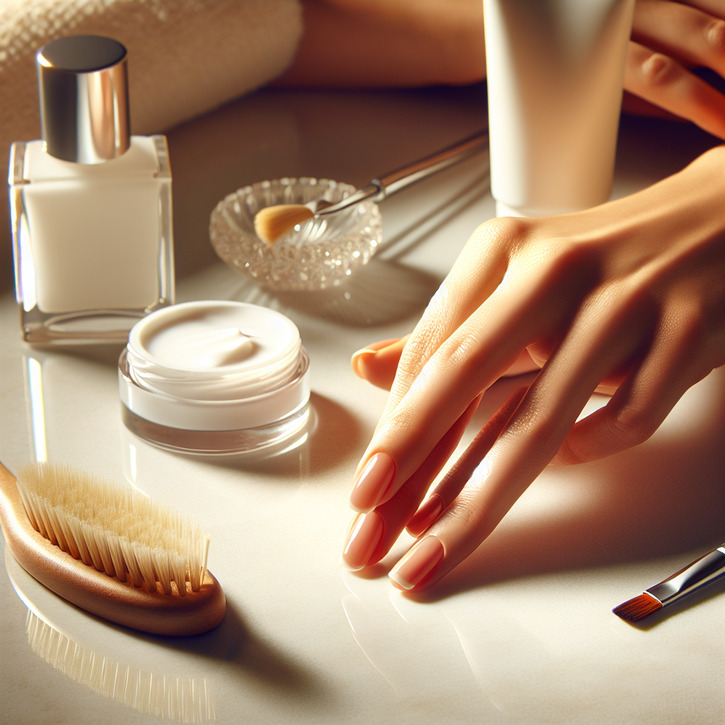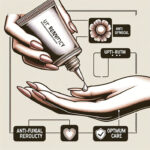How to Remove Finger Nail Fungus Stains from Your Nails

Getting to Know Finger Nail Fungus Stains
What's Finger Nail Fungus All About?
Finger nail fungus—otherwise known as onychomycosis—is really just an infection caused by fungi that love cozy, damp spots. These pesky organisms tend to target your fingernails, eventually causing discoloration, and sometimes even making your nails thicken, crumble, or just look a bit off. Often, these fungi are the same culprits that lead to other skin issues, but they’ve figured out how to thrive under your nail plate. Many folks don’t even notice something’s up until those unsightly stains begin to show, which is why catching it early is a game changer. In plain terms, finger nail fungus is a common problem that, if left unchecked, might need more than just a little home remedy to keep your nails healthy.
How Does the Fungus Change Nail Color?
The funky nail colors you see are really the fungus doing its thing—sneaking into the nail structure, feasting on keratin (the main protein in your nails), and causing a build-up of debris and pigments. Over time, these changes can lead to yellow, brown, or even white stains spreading across your nails. It’s usually a slow burn, so the changes creep up on you gradually until the infection is well under way. As the fungus grows, your nail might even become brittle. Without treatment, this process can get worse, potentially spilling over to your surrounding skin or even other nails.
What It Means for Your Nail Health
Beyond just looking a bit worse, finger nail fungus can actually take a toll on the overall health of your nails. Once the fungi invade, they trigger inflammation and break down the nail structure, making your nails more prone to splits, breaks, and even further infections. This weakened state could mean discomfort during everyday activities like typing or simply handling your phone. And if you don’t nip it in the bud, the infection might spread, eventually affecting more nails and even wearing down your overall confidence. Early treatment and preventive measures are key for keeping both your nails and self-esteem intact.
Spotting the Signs of Finger Nail Fungus
Common Warning Signs to Look Out For
The first step in tackling finger nail fungus is being able to recognize its typical signs. Usually, the first clue is a change in nail color—think yellow, brown, or white spots on the nail surface. You might also notice that your nails feel thicker than normal, and sometimes the edges turn lopsided or jagged. A slight odor can also give you a hint that something’s off. These visual signs often come hand in hand with a change in texture, making your nails crumblier or more brittle than usual. The sooner you spot these symptoms, the quicker you can take action to stop the infection from spreading.
How to Tell Fungus Stains Apart from Other Nail Issues
It’s worth noting that not every discoloration is due to a fungus. Sometimes nail polish stains, psoriasis, or even nail injuries can cause similar changes. For example, nail polish that's not been removed properly might leave behind a stubborn mark, and psoriasis can affect nail texture and thickness too. What sets fungal infections apart is the gradual structural damage to your nail plate along with those color changes. A hands-on check by a professional—or even lab tests in some cases—can help pinpoint the exact issue, ensuring that any treatment you choose is tailored just right.
When Is It Time to See a Professional?
Generally, finger nail fungus starts as a minor nuisance, but there are times when you should definitely get a professional's input. If you notice that your nails are changing rapidly, experiencing persistent pain, or if the discoloration starts jumping to other nails, it's a good idea to reach out to a healthcare provider. This advice is especially important for those with conditions like diabetes or a weakened immune system. Often, getting help early on can keep the infection from spreading to nearby tissues or worsening overall. So, if your home remedies don’t seem to be cutting it after a few weeks—or if things even get worse—it might be time for a deeper dive with a specialist.
What Sparks Finger Nail Fungus?
Environmental and Lifestyle Factors
Believe it or not, your everyday environment and habits can play a big part in the onset of finger nail fungus. Spending a lot of time in damp settings—like at the gym, pool, or even in a humid office—can create an ideal playground for these fungi. Not drying your hands properly after washing or wearing gloves that are too tight can also invite trouble. Over time, these little habits couple with the environment to slowly weaken your nails, making them more attractive to fungal invaders.
How Your Health and Immunity Come Into Play
It’s not just about what’s outside; your internal health matters too. For instance, if you’re dealing with chronic conditions like diabetes, your nails might not fight off infections as robustly due to poorer blood circulation and a sluggish immune system. Likewise, as we age or in cases of other immune-compromising conditions, our nails become a soft target. Recognizing these health-related factors is key—they remind us just how important it is to keep up with overall well-being and take preventive measures if you’re more prone to infections anyway.
Other Risk Factors that Speed Things Up
Several risk factors can give the fungus a head start. Constant exposure to moist conditions combined with injuries to the nail barrier creates a perfect storm for fungal growth. Also, sharing personal grooming tools, frequenting communal spaces without proper hygiene, or even a family history of fungal infections can make a difference. Each of these elements weakens your nail’s natural defenses, allowing the fungus to take root and spread faster. By spotting and addressing these risks early on, you can help slow down the infection and protect your nails.
Removing Finger Nail Fungus Stains at Home
Using Natural Ingredients to Fight Fungus
When it comes to tackling finger nail fungus, many people turn to home remedies as a first line of defense. Natural ingredients like tea tree oil, apple cider vinegar, and coconut oil have been going around for ages as go-to solutions. Tea tree oil is famous for its antifungal punch, apple cider vinegar helps balance the pH, and coconut oil's fatty acids offer some antimicrobial benefits. Typically, these ingredients are diluted and applied directly to the affected nail, and lots of folks have seen gradual improvements in both nail color and texture with regular use. Of course, results can vary from person to person.
Easy Steps for At-Home Treatment
Crafting a simple at-home treatment plan can really empower you in the fight against fungus. Start off by giving your nails a good clean and making sure they're completely dry—moisture is a big no-no here. Next, mix equal parts apple cider vinegar and water and soak your nails in the solution for about 15 to 20 minutes. After the soak, dry your nails thoroughly before dabbling in a drop of tea tree oil. Double down on this routine daily, and maybe alternate with coconut oil to keep the skin around your nails nice and moisturized. Just remember that consistency is key; natural remedies take time to show their magic, so stick with it for a few weeks.
Playing It Safe with Home Remedies
Even though home remedies are generally safe, a few simple precautions can help you avoid any unwelcome side effects. Always start with a patch test when trying out something new to make sure your skin reacts nicely. Don’t go overboard with essential oils like tea tree oil, as too much can lead to dryness or irritation. And be sure you’re using high-quality products without any harsh additives. If you start to notice any irritation or if symptoms worsen, it’s best to stop and check in with a healthcare provider. This way, you can enjoy the benefits of natural treatments while keeping your nails safe.
When to Consider Professional Treatments
An Overview of Medical and Laser Options
Sometimes, home remedies might not do the trick, and that’s when professional treatments come into play. Options range from topical antifungal solutions to oral medications designed specifically to combat nail fungus. Lately, laser therapy has been making waves too—it targets the fungus directly without messing with the surrounding tissues. Each of these treatments brings something different to the table, depending on how severe or persistent the infection is. For example, laser treatments are non-invasive and great for those with sensitive skin, while medical therapies can be more aggressive when needed.
Prescription Treatments for Those Tough Cases
If the fungus turns out to be particularly stubborn or widespread, prescription medications might be your best bet. Oral antifungal drugs like terbinafine or itraconazole work from the inside out, attacking the infection at its source. There are also topical prescriptions that can seep into the nail and halt fungal growth. These medications are usually recommended after a careful diagnosis, and while they tend to be effective, they can have side effects. That’s why it’s crucial to use them under a doctor’s guidance.
Weighing the Pros and Cons
Every treatment option has its ups and downs. Medical and laser treatments often deliver results faster than home remedies, but, for instance, laser therapy might not work for every kind of fungus and can sometimes be on the pricier side. Prescription meds are convenient and tackle broad infections effectively, yet they may lead to side effects like stomach upset or even liver issues. And let’s face it, some treatments demand a lot of patience with long recovery times. Understanding these pros and cons can help you and your doctor decide on a strategy that fits your specific needs.
Keeping Fungus at Bay: Prevention Strategies
Everyday Nail Hygiene Habits
Preventing nail fungus in the first place starts with a solid nail care routine. Keeping your nails clean and dry is a must since fungi love moisture. Regular trimming and gentle cleaning of the nail beds help remove buildup where fungi could hide out. It’s also best to avoid cutting or damaging your cuticles—they act as a natural barrier against infections. Always use your own nail care tools and make sure they’re sanitized to cut down on any accidental transfer of germs. These small everyday changes go a long way toward keeping your nails in top shape.
Protect Yourself in High-Risk Spots
When you're in places like gyms, swimming pools, or public showers, extra precautions are a smart move. Consider wearing waterproof gloves or using disposable shoe covers, and wherever possible, dry your hands thoroughly after washing. In humid work environments, barrier creams or a protective nail polish can make a real difference too. By adjusting your habits in these high-risk areas, you can greatly reduce your chances of picking up a fungal infection.
Long-Term Nail Care After Fungus Treatment
Tips for Keeping Your Nails Healthy
Once you’ve managed to kick the fungus to the curb, staying on top of nail care is essential to keep it from coming back. Think of it as a long-term commitment: trim your nails regularly using clean, sharp tools, and keep them moisturized to maintain flexibility and strength. A balanced diet rich in vitamins and minerals can also do wonders for your nails, and adding supplements might help—always check with your doctor first. Rotating your nail care routine with the seasons and avoiding harsh chemicals will help keep your nails tough and shining even after treatment.
Keeping an Eye Out for Recurrence
It pays to be vigilant after treatment. Regularly take a moment to inspect your nails in good light for any early signs of discoloration or texture changes—these can be early warnings of a potential recurrence. A quick weekly check can help you catch any problems before they escalate. And if anything seems off, don’t hesitate to reach out to a professional for guidance. Being proactive is the best way to ensure your nails stay healthy over the long haul.
All in all, dealing with finger nail fungus starts with knowing the ins and outs of the condition, from spotting its early signs to understanding the various factors that contribute to it. Whether you decide to try natural home remedies or opt for more clinical treatments, the aim is to restore your nail health and prevent future infections. With a bit of care, persistence, and the right approach, you can see real improvements and enjoy healthier, more confident nails.
Stay informed, stick with a consistent nail care routine, and don’t be afraid to seek help when needed. Every person’s journey is unique, so what works for one might need tweaking for another. Balancing professional advice, healthy lifestyle choices, and everyday habits will give you the best shot at keeping your nails fungus-free and looking great. Embrace these tips, and take heart knowing that better nail health is definitely within reach.





